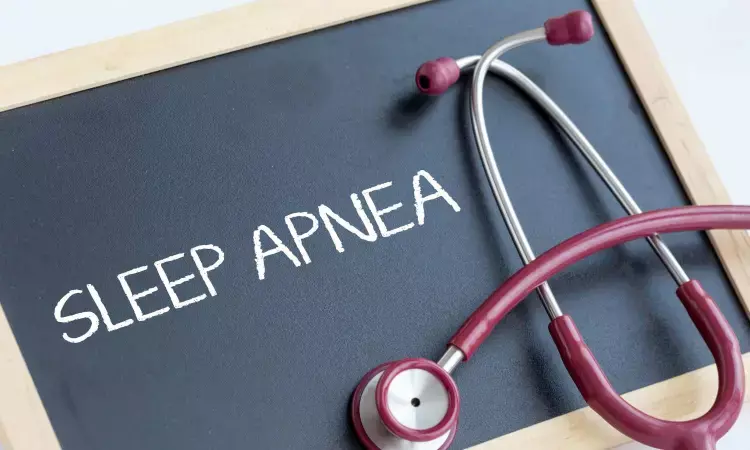- Home
- Medical news & Guidelines
- Anesthesiology
- Cardiology and CTVS
- Critical Care
- Dentistry
- Dermatology
- Diabetes and Endocrinology
- ENT
- Gastroenterology
- Medicine
- Nephrology
- Neurology
- Obstretics-Gynaecology
- Oncology
- Ophthalmology
- Orthopaedics
- Pediatrics-Neonatology
- Psychiatry
- Pulmonology
- Radiology
- Surgery
- Urology
- Laboratory Medicine
- Diet
- Nursing
- Paramedical
- Physiotherapy
- Health news
- Fact Check
- Bone Health Fact Check
- Brain Health Fact Check
- Cancer Related Fact Check
- Child Care Fact Check
- Dental and oral health fact check
- Diabetes and metabolic health fact check
- Diet and Nutrition Fact Check
- Eye and ENT Care Fact Check
- Fitness fact check
- Gut health fact check
- Heart health fact check
- Kidney health fact check
- Medical education fact check
- Men's health fact check
- Respiratory fact check
- Skin and hair care fact check
- Vaccine and Immunization fact check
- Women's health fact check
- AYUSH
- State News
- Andaman and Nicobar Islands
- Andhra Pradesh
- Arunachal Pradesh
- Assam
- Bihar
- Chandigarh
- Chattisgarh
- Dadra and Nagar Haveli
- Daman and Diu
- Delhi
- Goa
- Gujarat
- Haryana
- Himachal Pradesh
- Jammu & Kashmir
- Jharkhand
- Karnataka
- Kerala
- Ladakh
- Lakshadweep
- Madhya Pradesh
- Maharashtra
- Manipur
- Meghalaya
- Mizoram
- Nagaland
- Odisha
- Puducherry
- Punjab
- Rajasthan
- Sikkim
- Tamil Nadu
- Telangana
- Tripura
- Uttar Pradesh
- Uttrakhand
- West Bengal
- Medical Education
- Industry
Obstructive sleep apnea linked with low bone mineral density: Study

USA: Adults with obstructive sleep apnea (OSA) have low bone mineral density than those without OSA, a recent study published in the Journal of Craniomandibular & Sleep Practice has shown.
The findings are crucial for individuals with sleep apnea, as low bone mineral density is an indicator of osteoporosis-a condition in which bones become weak and brittle. In addition to increasing the risk of fractures, low bone mineral density also impacts oral health, causing teeth to become loose and dental implants to fail, says senior author Thikriat Al-Jewair, DDS, associate professor of orthodontics in the UB School of Dental Medicine and director of the school’s Advanced Education Program in Orthodontics.
The researchers at University at Buffalo used cone beam computed tomography (CBCT)-a type of X-ray-to measure bone density in the head and neck of 38 adult participants, half of whom had obstructive sleep apnea.
When controlling for age, sex and weight, the participants with obstructive sleep apnea had significantly lower bone mineral density than those without the condition.
Obstructive sleep apnea, which is characterized by difficulty breathing while asleep, can cause hypoxia (low levels of oxygen in the body), inflammation, oxidative stress and shortened breathing patterns. Each of these symptoms may have a chronic negative effect on bone metabolism and, ultimately, bone density, says Al-Jewair.
“While the link between obstructive sleep apnea and low bone mineral density has yet to be fully explored, this study offers new evidence on their connection that could have several implications for orthodontic treatment,” says Al-Jewair, also assistant dean for equity, diversity and inclusion in the UB School of Dental Medicine.
“If a patient has been diagnosed with sleep apnea, this can influence treatment planning and management. CBCT imaging has become an integral part of daily orthodontic practice and could be used as a screening tool for low bone mineral density,” she said. “Orthodontists could then inform their patients of their propensity for low bone mineral density and encourage them to seek further consultation with their physician, as well as warn the patient of possible adverse outcomes, increased risks and effects on treatment time.”
Reference:
Mira Daljeet, Stephen Warunek, David A. Covell, Alberto Monegro, Terry Giangreco & Thikriat Al-Jewair (2022) Association between obstructive sleep apnea syndrome and bone mineral density in adult orthodontic populations, CRANIO®, DOI: 10.1080/08869634.2022.2142724
Dr Kamal Kant Kohli-MBBS, DTCD- a chest specialist with more than 30 years of practice and a flair for writing clinical articles, Dr Kamal Kant Kohli joined Medical Dialogues as a Chief Editor of Medical News. Besides writing articles, as an editor, he proofreads and verifies all the medical content published on Medical Dialogues including those coming from journals, studies,medical conferences,guidelines etc. Email: drkohli@medicaldialogues.in. Contact no. 011-43720751


